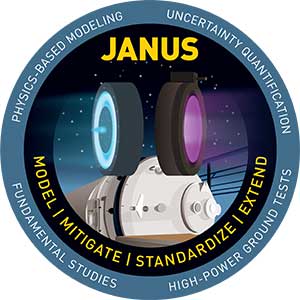
NASA Joint Advanced Propulsion Institute (JANUS) Annual Review Held at the University of Michigan
JANUS co-director and Michigan Aerospace Associate professor, Benjamin Jorns, hosts second annual review meeting at Palmer Commons

JANUS co-director and Michigan Aerospace Associate professor, Benjamin Jorns, hosts second annual review meeting at Palmer Commons

The NASA Joint Advanced Propulsion Institute (JANUS) held its second annual review meeting last month. It was proudly hosted by the University of Michigan at Palmer Commons. This $15 Million, five-year institute led by Georgia Tech and co-directed by Michigan Aerospace Associate Professor Benjamin Jorns brought over sixty individuals from NASA, peer institutions, and the Department of Defense onto campus.
JANUS is a part of the NASA Space Technology Research Institutes (STRI), to research cutting-edge advances that will impact the future aerospace capabilities while “strengthening NASA’s ties to the academic community.” The NASA Space Technology Mission Directorate has selected JANUS to explore and enable the testing of high power electric propulsion (EP) systems for human exploration.
The conference is a yearly requirement from NASA to host an in-person review and is rotated among the leading centers. At the review, the eleven member institutions of JANUS presented to NASA and an industrial advisory board updates on the progress of the institute. The key theme of the year was based around supporting the development of predictive models for translating measurements of electric propulsion systems on the ground to space.
U-M Associate Professor Benjamin Jorns serves as co-director of JANUS and director of the Plasmadynamics and Electric Propulsion Laboratory (PEPL). His work with electric propulsion technology has centered on developing first-principles understanding of their operating principles as well as implementing time-resolved and laser-based diagnostics to characterize behavior.
“JANUS has the mandate of figuring out how to test next-generation, high power (> 100 kW) electric propulsion devices for in-space applications. These are the devices that will support future crewed exploration to cislunar space and beyond,” Professor Jorns explains. “ One of the biggest challenges in the field is that current test facilities cannot handle thrusters operating at these powers. The institute’s goal is to determine if there are strategies to modify facilities or to leverage models to allow us to make predictions with confidence about how these next generation concepts will have on orbit.”